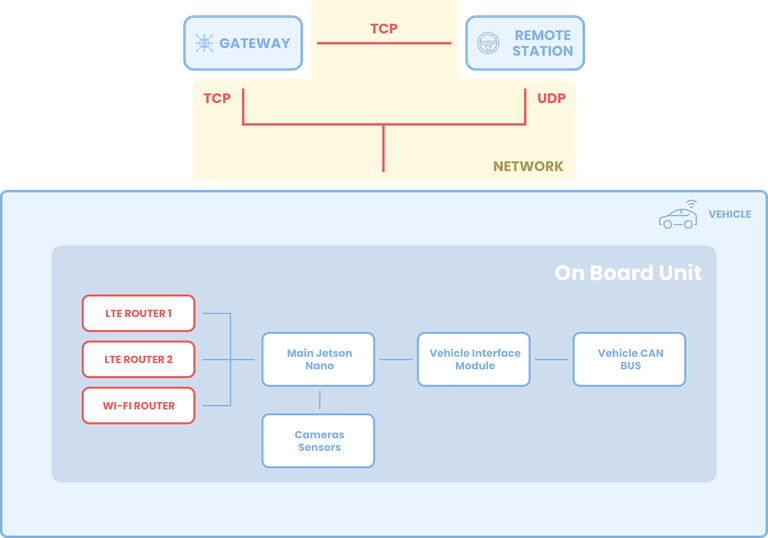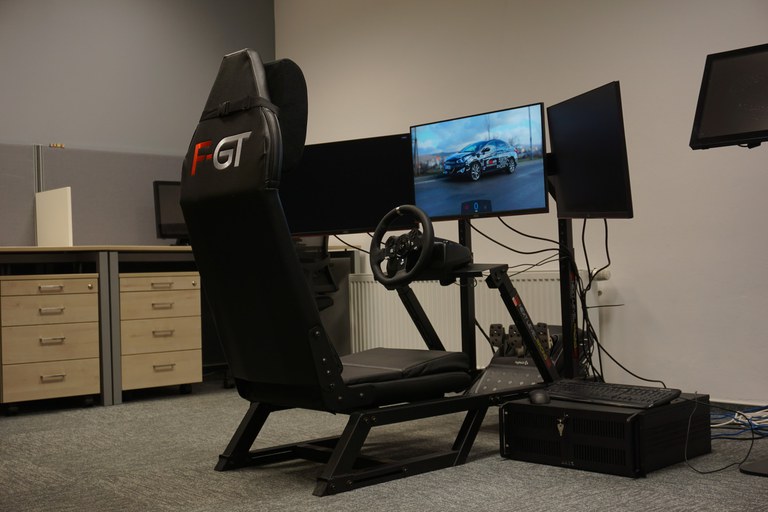UC2 - Car Teleoperation
- RISE Research Institutes of Sweden
- Brno University of Technology (Faculty of Information Technology, Czech republic) with expertise (among others) in automated analysis and verification
- QRTECH AB QRTECH has a background of 20 years of development for safe power electronics and embedded systems. QRTECH strategy is to be a frontrunner for new and emerging technologies.
- The Swedish National Road and Transport Research Institute STATENS VAG- OCH TRANSPORTFORSKNINGSINSTITUT

Vehicle
- Routers
- Two routers for connection to two LTE network providers
- Third router enabling connection to WiFi -both 2.4GHz and 5GHz
- Routers are used to send camera streams and other data (e.g. car status, data from sensors or driver assistance systems) to the remote control station
- Main communication hub (implemented by Jetson Nano) evaluates and distributes data from remote station, and controls camera nodes
- Vehicle interface module which translates drive commands for the vehicle which are received from the Nano and sent to vehicle’s CAN BUS.
Gateway (GW)
Central server module serves for registration and authentication of all clients and connects the remote station with selected vehicle. Gateway ensures stability of connection so if the connection is lost, the gateway immediately initiates reconnection.
Remote station (RS)
Remote station allows the operator to control the vehicle. It is placed at a remote location. After the RS connects to the vehicle, operator is able to see the vehicle’s camera streams (and optionally other sensory data) on several displays, and, using the steering wheel and pedals, can operate the vehicle - see Figure 1.4.

Figure 1.4: Remote station
Network
The primary way of data transfer for teleoperation are radio networks, more specifically WiFi and LTE technology.
WiFi is using both 2.4Ghz and 5Ghz band and was chosen for its low latency over local networks. WiFi also enables to transfer bigger volumes of data, which means a possibility of higher quality for streamed video.
LTE is data transfer over the public teleoperator mobile data and enables a connection also in places without WiFi coverage. The system utilises several routers in OBU for 2 reasons:
- Connection redundancy
- Possibility of data transfer using two independent mobile carriers. This makes the system more resistant to an outage.
Transmission line(s)
For the communication of GW with vehicle and RS the reliable TCP protocol is used. The following information is transferred over TCP: registration, status, connection request, connection checks.
